I have found that making healthy choices when it comes to things you buy is BY FAR the most complicated part of trying to make healthy changes. All of the ingredients in food, cosmetics, and household items were overwhelming and frankly extremely stressful. (I won’t lie..there was a point where I blacked out after a toxicology lecture and just started throwing things away). You don’t have to do that! I eventually smoothed out some basic principles of the shopping trade that I now apply all the time without even realizing it. What first applies to food eventually applies to cosmetics, household goods, and eventually even things like water bottles and baby toys. The process isn’t perfect, but it sure makes good decision making easy.
Rules, Regulation, and the Reason Why You MUST Read Beyond the Label:
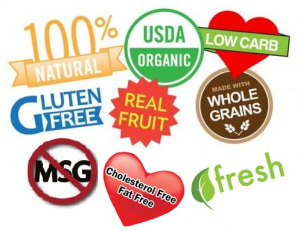 I think it is extremely important to have a basic understanding of a few things that go on behind the scenes when it comes to things we buy, after all what we eat, put on our skin, inhale, etc. really sets the foundation for our overall health . No conspiracy theories, no guessing, there are certain things that the companies that make things you buy are allowed to tell you, and not tell you. Understanding how this system works will make you a smarter shopper, and an informed consumer when it comes to almost ANY purchase.
I think it is extremely important to have a basic understanding of a few things that go on behind the scenes when it comes to things we buy, after all what we eat, put on our skin, inhale, etc. really sets the foundation for our overall health . No conspiracy theories, no guessing, there are certain things that the companies that make things you buy are allowed to tell you, and not tell you. Understanding how this system works will make you a smarter shopper, and an informed consumer when it comes to almost ANY purchase.
#1: Ingredients
You will find out eventually that my number one, first place, all time recommendation is to READ THE INGREDIENTS on anything you buy and look them up online for anything that does not have a label (ie. something from a restaurant). This includes, but is not limited to: cereal, deodorant, candles, sunscreen, salad dressing, energy bars, perfume, shampoo..you get the idea. If it comes in a package, and you come in contact with it, know what is in it. Getting in the practice of this helps you choose less processed, more natural products almost every time.
The reason for this is simple: no matter what is on the label of the product, what is listed in the ingredients is another story entirely. Ingredients are required by the FDA to be listed, generally in the order by how much is in the product. From here, things that appear in the list themselves are often quite deceiving.
FRAGRANCE is one such thing that must be listed, but its specific components are not required by the FDA to be divulged. The loophole here is that something like “fragrance” is considered to be a trade secret and therefore the specific components must be kept exactly that..a secret. Some fragrance formulations contain hundreds of chemicals. (Ever had a skin reaction to new detergent or shampoo? Ever see that sign in the doctors office that says “fragrance free environment”?) It is so easy to find products without fragrance, and if you are still using soap to get clean you won’t “need” any other smells. Your skin, eyes, lungs, and fragrance sensitive people around you will thank you.
BHT (Butylated hydroxytoluene) is a preservative linked to some very serious health issues, including cancer and hyperactivity in children. It is a controversial preservative that is currently allowed to be added to foods in “small quantities”. This is not listed as a preservative, it is usually listed simply as BHT. It can be found in most of the big name breakfast cereals. This is just one example of MANY compounds allowed to be in your food that have scientific research supporting potential negative effects. Bottom line is, your food doesn’t need it.
The idea behind all of this “allowed to be listed” talk comes from the industry’s standpoint about our free market. It is up to the consumer to make an “informed decision”. Many companies, and the FDA, generally feel that if the chemicals are listed–it is the consumers problem now. Spend a few minutes looking up law suits on this topic and you will find many a clever argument along these lines.
In summary, if you do not know what it is (fragrance, BHT, (insert a big long chemical word here) put the product down. I PROMISE you there is an alternative without the additional additives for virtually anything you can think of from shampoo to cheerios.
#2: If it is that bad for your health, there is probably not a chemical-free, less processed alternative.
While I do promise that there is a better alternative for most things that have unnecessary added chemicals, sometimes…well there isn’t (remember, I said “virtually anything”). This guy’s site really says it best, but ultimately if the long list of ingredients goes on and on in your favorite snack food or household item, if there is not a better homemade recipe or store bought alternative, then you should probably consider living life without it.
Remember to keep it simple. Do the frozen veggies without the weird warehouse sauce. Get the natural ice cream made with real objects found in nature (fruits you recognize+milk+sugar=ingredients). Get the shampoo and conditioner with plant-based ingredients sans sulphates and other junk (trust me..I would NOT touch my hair with it if I was not a full believer that it was better).
Keeping it simple means keeping things LESS processed, MORE natural, LESS likely to cause you problems, and MORE likely to save you money! (ie. really good, basic soap laundry detergent cleans clothes well enough to make it through the washer and dryer without softener and without dryer sheets. My clothes actually look better, feel better, and have so far worn out less quickly).
#3: Labeling
The bottom line with this one is to ‘un-train’ your eye from automatically looking at the flashy “made with whole grain”, “all natural”, “light”, words on packages and IMMEDIATELY turn it around and decide for yourself what it is (yes, read the ingredients).
Companies are basically allowed to say things like “multi-grain” in ways that make it seem like a health benefit (multi-grain and whole wheat are NOT the same thing). Cosmetics companies are allowed to put “natural” on the front of shampoos and soaps that contain many unnatural chemicals. It is important to realize that any of the FDA’s recommendations for things along these lines are exactly that: recommendations. There is very little legally binding regulation that the FDA puts forth when it comes to misleading labeling, and in fact; in cases like fast food advertising, putting Tony the Tiger on cereal, etc. the FDA recommendations would actually have to be approved through legislation by the United States Senate before any company is held accountable.
Take for example the new line of skin care products that just launched a billion TV commercials (Simple), but the product is marketed as a pure, simple alternative to other products. According to the commercial, that cleverly shows how its product will never make your face like a paint stained white rose, the company is made up of “sensitive skin experts”. Well, these experts have included many exciting chemicals, including Parabens in virtually every single one of their products.
Parabens have been shown to have estrogen-mimicking effects in the body and like BHT, their use is very controversial. The FDA has a very nice little write up about the use of Parabens in cosmetics. While it claims that the effects of parabens are basically null and void because they are used in small doses, etc.. it makes very certain to remind you in the first paragraph that the FDA does not approve cosmetic ingredients. It is all up to the companies themselves to determine the safety of their own products.
Now there is some food for thought.
#4: Pay Attention to where the product came from
Is it meat? If it is, and it is not from a smaller, free-range, semi-local farm, then it was very likely produced in one of the countries very large slaughter houses by one of a handful of large companies who control more than eighty percent of the meat packing industry. The origin of any of your animal products is certainly worth looking up when you get home.
The average ground beef patty from the supermarket contains meat particles from dozens to hundreds different cows. The list of shocking, disturbing information could go on and on. If you have TV, or have ever been on the internet, access to this very true information is not hard to find. Your risk for exposure to antibiotic resistant bacteria, food poisoning from new strains of e.coli, and a number of other very serious problems increases with the size of the operation your meat came from. This is all without mentioning the very serious environmental impact of the meat industry as a whole. There is some information about this posted in my resources section. If you eat meat, buy it from local (as local as possible for you), organic, smaller farms. Ask your restaurants where they buy their meat.
The same idea goes for produce. If it is from a big name producer then it has been sprayed with a number of pesticides (often illegal for use in the united states, but perfectly legal for use on fruits and vegetables produced in Latin America and sold back to the US…makes sense right?). If it is a fruit, it may have been ripened with ethylene gas. Your chance for coming in contact with e.coli, other dangerous bacteria, and chemical pesticides, drastically increases every time you consume non organic, big name produce and food goods in general. (Think peanut butter). Try your very best to at least switch out one or two fruits or vegetables with organic each time you go to the store and work up to going organic. Utilize warm seasons for farmers market purchases, and keep an eye out for deals on organic produce. They exist!
It is worth the price increase to purchase the local, organic, versions of these products. You may even have some extra cash laying around to put towards these items after making some smart switches in other areas (see below). With more people starting to buy this way…the prices are actually beginning to drop drastically (see upcoming post). Not to mention, removing your support for big food industries will encourage small, local, ethical, and eco friendly businesses to flourish.
#5: There is hope!
Now that you understand how crucial it is to take it upon yourself to decide if something is the right choice or not, it is just as important to know how to find an alternative. That is what I have been spending about a year doing. They are NOT always more expensive and in fact they are often a lot cheaper.
Take soaps for example. True organic, harsh chemical free, soaps can be the same price as something you’d find at your basic supermarket. The reason for this is that they are just SOAP. No added junk.
Switch your breakfast cereal with a preservative free option that can be found either in your regular supermarket or at a place like whole foods for about HALF the price of big name cereals.
New Rules Lifestyle to Live By:
1. Read the ingredients for everything you buy. (it takes seconds…no excuses)
2. If there are ingredients you can’t pronounce or identify, put it down. (If you are busy, overwhelmed, and just really need that Mystic Mountain Fresh laundry detergent: get it. Go home later and look up the ingredients. Make a note to find an alternative, and phase the product out next time). There are many resources out there that will help you decipher the long list of ingredients. (The Environmental Working Group has already evaluated almost every cosmetic in your house for you.)
3. Do not be sucked in by commercials and fancy labels with eye catching key words. YOU DECIDE if something is truly organic, whole grain, and preservative or fragrance free. Just read the back.
4. Think about where your food and other products come from. Invest your consumer dollars in products and companies that support sustainable, ethical, and healthier growing and farming practices, and that keep your risk for very serious exposures and illnesses LOW.
4. Do not despair. You do not have to throw away everything you own and immediately buy alternatives. Make it a step-by-step effort. Pick one item each store trip. Finish your old products and commit to trying an alternative. Wean yourself off of things…you will find that you slowly start to like the new stuff better. Each little improvement makes a big difference!
5. Be proud of yourself. Cheesy I know, but take pride in the fact that you are going back to basics, getting rid of unnecessary ingredients, decreasing your exposure to harmful pathogens, increasing your support for sustainable practices, and decreasing your chance of having allergic reactions, breathing problems, fatigue, and all sorts of illnesses. It is a BIG deal! Every little step makes a big difference, and trust me…you will not miss the old stuff one bit.

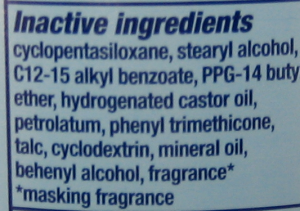
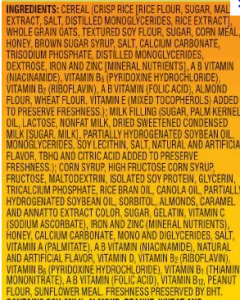
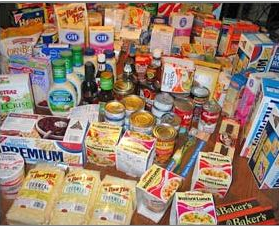
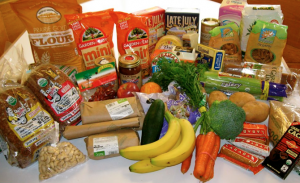

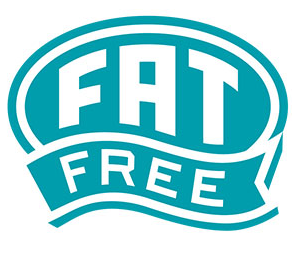
Hey Courtney! I absolutely LOVE what you are doing. And I know where you got started . . . your mom. She always amazed me when it came to her garden and healthy cooking. She tried to teach me but it did not take back then.
Anyway, I have a topic you may have info about or could find.
Menopause absolutely billowed me into a fluffy version of me which looks just like my mom and grandmother after menopause.
Fifty lbs later, I am trying to figure out how to best reverse the body fat expansion and soup up my metabolism . . . naturally.
But I don’t want to eat or take the wrong things.
Any ideas on how to start this process?
Well, I found a program at my doctor’s office and I am down 55 pounds!
And learning to maintain it. That’s the hardest part BUT your recommendations are exactly what I need to follow to stay healthy and keep the fat off.
I feel great and am pretty dang healthy at 59.